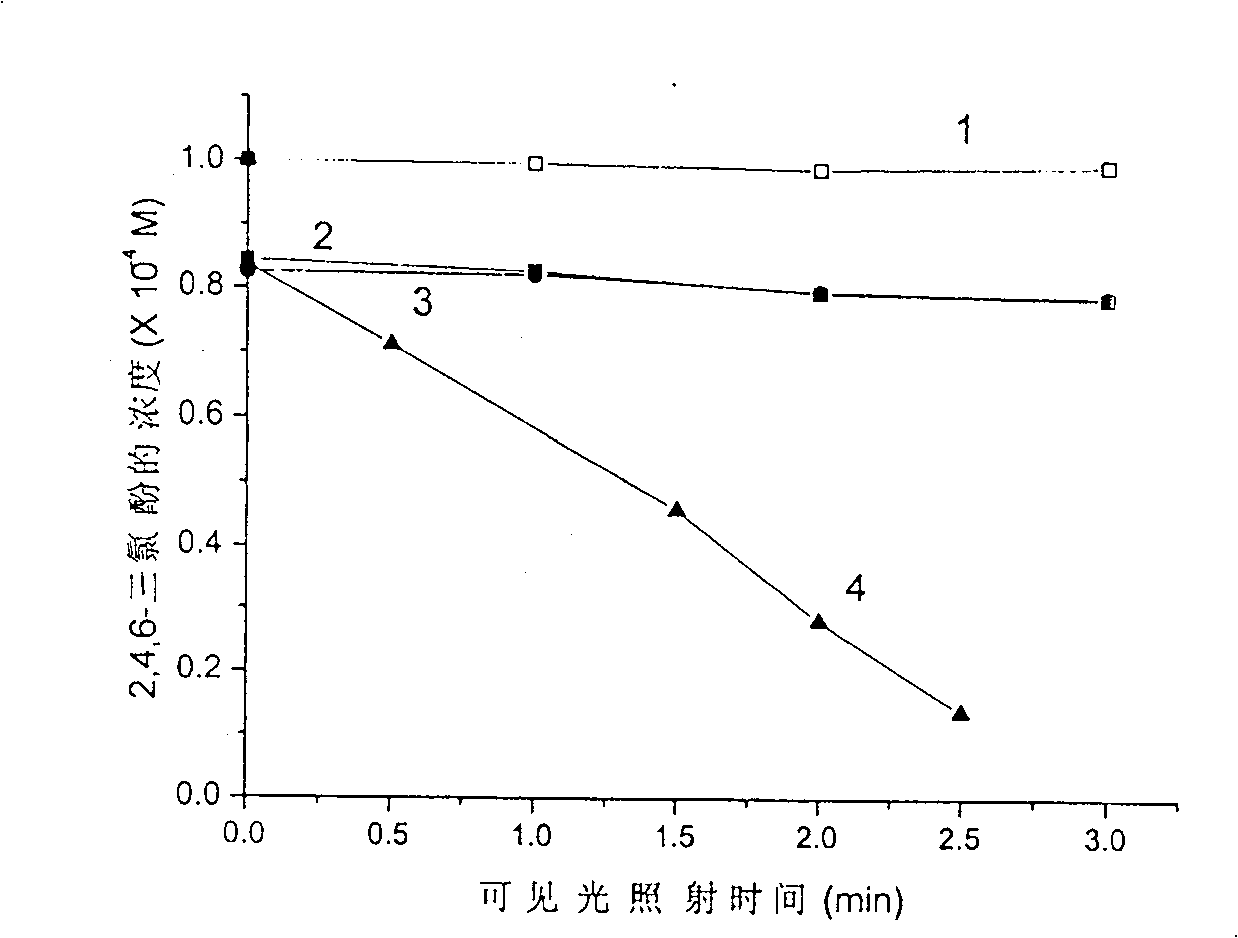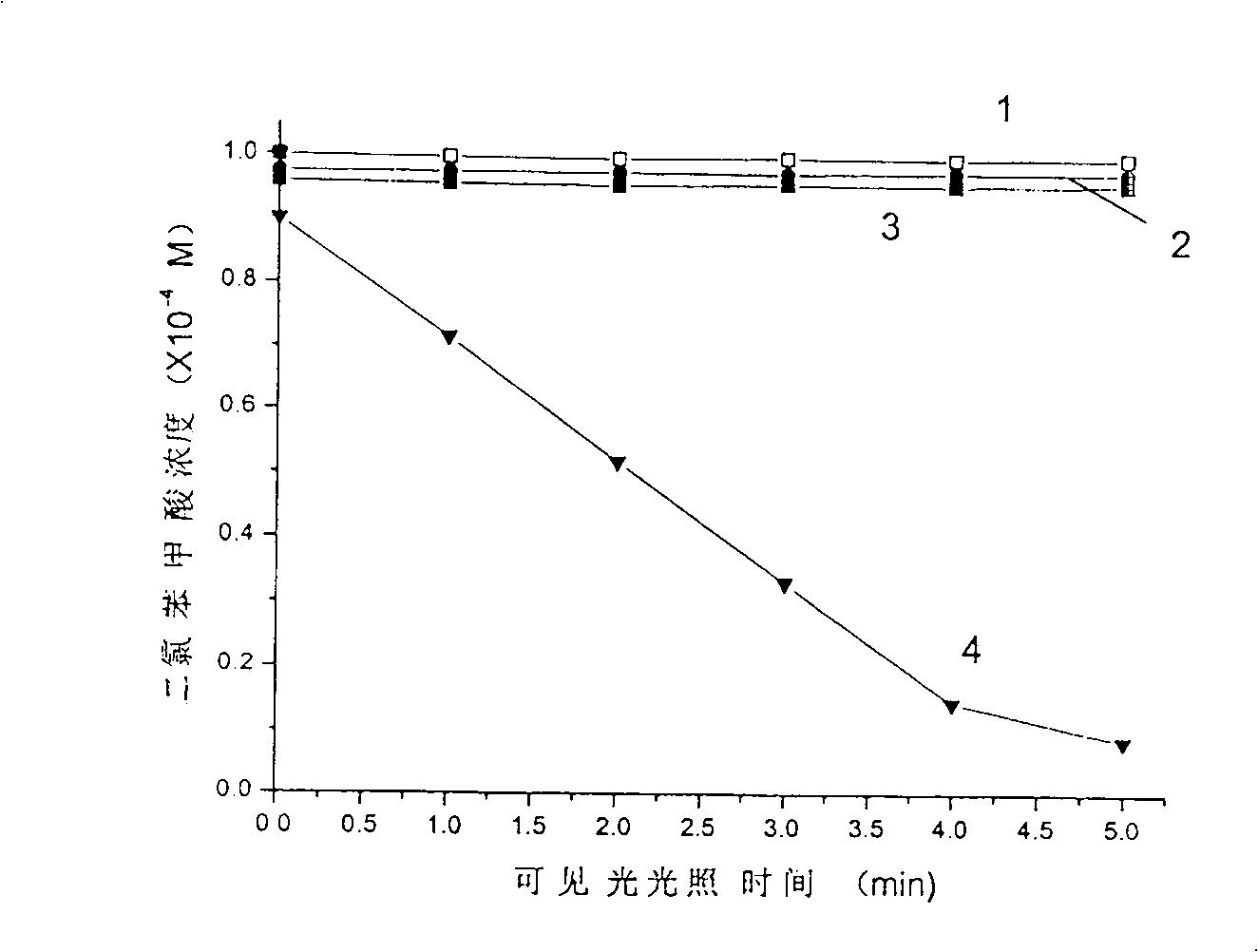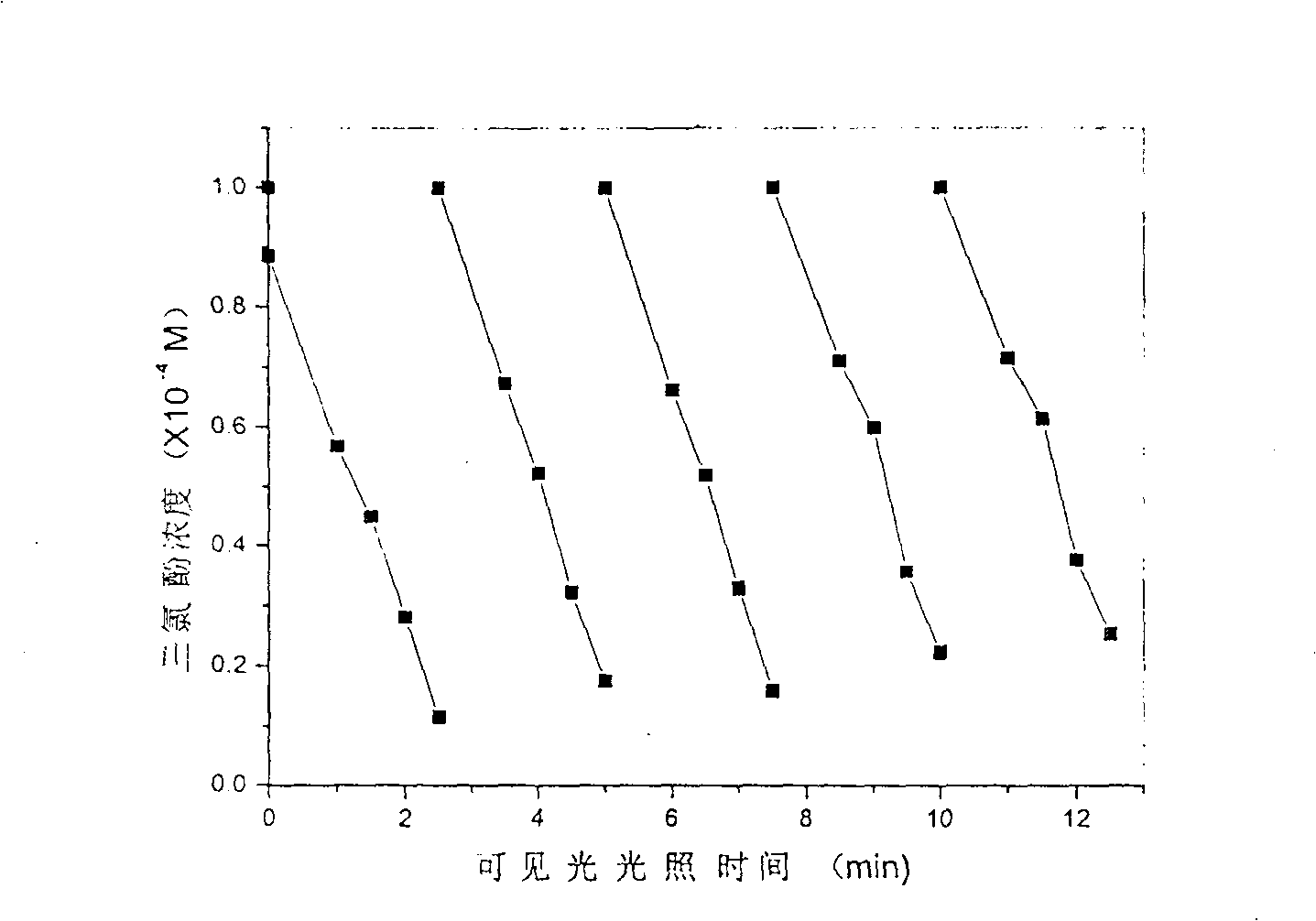Photocatalyst responding to visible light, and preparation method and application thereof
A photocatalyst and visible light technology are applied to the preparation of the above catalyst, the use of the above catalyst, and the field of photocatalysts with visible light response, which can solve the problems of high production cost, low photocatalytic efficiency, easy photocorrosion of the catalyst, etc. Simple process and low cost effect
- Summary
- Abstract
- Description
- Claims
- Application Information
AI Technical Summary
Problems solved by technology
Method used
Image
Examples
Embodiment 1
[0033] Add 50 mg of copper sulfate (0.01 mol / liter) and 50 mg of boric acid (0.027 mol / liter) to 30 ml of anhydrous methanol solution to dissolve completely. Use a syringe to slowly add 10ml of titanium salt solution (0.29 mol) into the stock solution dropwise under vigorous stirring for about 20 minutes, and continue stirring for 2 hours after the addition is complete. A 5 mol / L nitric acid solution was added to the reaction solution at a rate of 0.1 ml every 10 minutes, and a sol was obtained after 12 hours, and left to age for 7 days. The solid precipitate obtained by volatilizing the sol solvent was dried at 100°C to obtain the photocatalyst.
Embodiment 2
[0035] Add 50 mg of nickel sulfate (0.01 mol / liter) and 50 mg of boric acid (0.024 mol / liter) to 30 ml of anhydrous methanol solution, and dissolve completely. Use a syringe to slowly add 10ml of titanium salt solution (0.29 moles) into the stock solution in about 20 minutes under vigorous stirring, and continue to stir for 2 hours after the addition is complete. A 5 mol / L nitric acid solution was added to the reaction solution at a rate of 0.1 ml every 10 minutes, and a sol was obtained after 12 hours, and left to age for 7 days. The solid precipitate obtained by volatilizing the sol solvent was dried at 120°C, heated to 700°C in a muffle furnace and maintained for 5 hours, and the photocatalyst was obtained after cooling.
Embodiment 3
[0037] Add 50mg indium trichloride tetrahydrate (5.6×10 -3 mol / L) and 50mg ammonium chloride (3×10 -2 mol / L), completely dissolved. Use a syringe to slowly add 10ml of titanium salt solution (0.29 mol) into the stock solution dropwise under vigorous stirring for about 20 minutes, and continue stirring for 2 hours after the addition is complete. A 5 mol / L nitric acid solution was added to the reaction solution at a rate of 0.1 ml every 10 minutes, and a sol was obtained after 12 hours, and left to age for 7 days. The solid precipitate obtained by volatilizing the sol solvent was dried at 120°C, heated to 700°C in a muffle furnace and maintained for 5 hours, and the photocatalyst was obtained after cooling.
PUM
 Login to View More
Login to View More Abstract
Description
Claims
Application Information
 Login to View More
Login to View More - R&D
- Intellectual Property
- Life Sciences
- Materials
- Tech Scout
- Unparalleled Data Quality
- Higher Quality Content
- 60% Fewer Hallucinations
Browse by: Latest US Patents, China's latest patents, Technical Efficacy Thesaurus, Application Domain, Technology Topic, Popular Technical Reports.
© 2025 PatSnap. All rights reserved.Legal|Privacy policy|Modern Slavery Act Transparency Statement|Sitemap|About US| Contact US: help@patsnap.com



